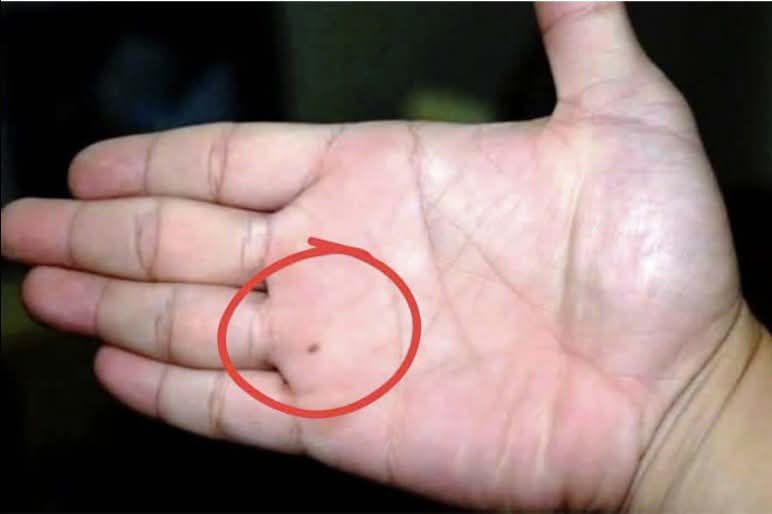ADVERTISEMENT
Anyone with a Mole on the Palm of Their Hand Should Pay Attention
Moles are common skin features that appear on various parts of the body. While most moles are harmless, they can sometimes indicate underlying health concerns. A particularly intriguing spot where moles can appear is on the palm of the hand. If you have a mole on your palm, it might be time to pay closer attention. While the presence of a mole on the palm is not necessarily cause for alarm, it can sometimes signal something more significant that should not be overlooked.
In this article, we’ll explore the potential meaning behind a mole on the palm of your hand, what it could symbolize, and what you should do if you discover one.
Moles and Their Origins: What Are They?
Moles, also known as nevi, are growths on the skin that occur when pigment-producing cells, called melanocytes, grow in clusters instead of being spread throughout the skin. They can vary in color, ranging from brown to black, and they can appear anywhere on the body. Most moles are harmless, but some can develop into melanomas, a type of skin cancer, which is why it’s important to keep an eye on any changes.
The cause of moles is typically a combination of genetic factors and sun exposure. They can appear at any age, although most moles develop in childhood or early adulthood. The majority of moles are benign, but their appearance in certain locations, like the palm, may warrant further consideration.
Moles on the Palm: What Does It Mean?
A mole on the palm of the hand is relatively rare compared to other body locations. The skin on the palms is different from the skin on the rest of the body, being thicker and having fewer melanocytes. As a result, moles on the palm may be more uncommon, but they can still occur.
In some cases, moles on the palm may not be indicative of any health issues, but it’s essential to observe their characteristics and any changes they may undergo over time.
What to Watch For
Not all moles are created equal, and certain characteristics can help distinguish between a benign mole and one that might need medical attention. The American Academy of Dermatology recommends using the ABCDE rule to evaluate moles:
- A for Asymmetry: If one half of the mole looks different from the other, this could be a warning sign.
- B for Border: Moles with uneven, jagged, or blurry borders are worth paying attention to.
- C for Color: A mole that has multiple colors or a color that changes over time could indicate a problem.
- D for Diameter: Moles larger than 6 millimeters (about the size of a pencil eraser) should be examined.
- E for Evolving: If a mole is changing in size, shape, or color, it could be a cause for concern.
- For Complete Cooking STEPS Please Head On Over To Next Page Or Open button (>) and don’t forget to SHARE with your Facebook friends
